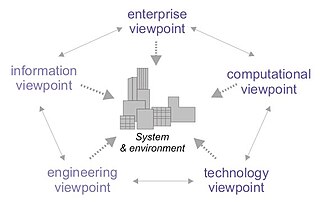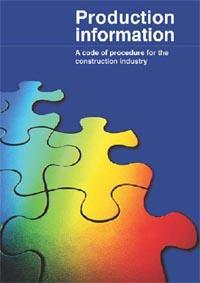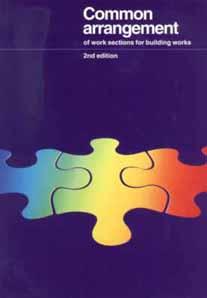
A roof is the top covering of a building, including all materials and constructions necessary to support it on the walls of the building or on uprights, providing protection against rain, snow, sunlight, extremes of temperature, and wind. A roof is part of the building envelope.

Configuration management (CM) is a systems engineering process for establishing and maintaining consistency of a product's performance, functional, and physical attributes with its requirements, design, and operational information throughout its life. The CM process is widely used by military engineering organizations to manage changes throughout the system lifecycle of complex systems, such as weapon systems, military vehicles, and information systems. Outside the military, the CM process is also used with IT service management as defined by ITIL, and with other domain models in the civil engineering and other industrial engineering segments such as roads, bridges, canals, dams, and buildings.

A data model is an abstract model that organizes elements of data and standardizes how they relate to one another and to the properties of real-world entities. For instance, a data model may specify that the data element representing a car be composed of a number of other elements which, in turn, represent the color and size of the car and define its owner.
A data dictionary, or metadata repository, as defined in the IBM Dictionary of Computing, is a "centralized repository of information about data such as meaning, relationships to other data, origin, usage, and format". Oracle defines it as a collection of tables with metadata. The term can have one of several closely related meanings pertaining to databases and database management systems (DBMS):
The Industry Foundation Classes (IFC) data model is intended to describe architectural, building and construction industry data.
The Construction Specifications Institute (CSI) is a United States national association of more than 8,000 construction industry professionals who are experts in building construction and the materials used therein. The Institute is dedicated to improving the communication of construction information through a diversified membership base of allied professionals involved in the creation and management of the built environment, continuous development and transformation of standards and formats, education and certification of professionals to improve project delivery processes, and creation of practice tools to assist users throughout the facility life-cycle. The work of CSI is currently focused in three areas being standards and publications, construction industry professional certifications, and continuing education for construction professionals.

An information model in software engineering is a representation of concepts and the relationships, constraints, rules, and operations to specify data semantics for a chosen domain of discourse. Typically it specifies relations between kinds of things, but may also include relations with individual things. It can provide sharable, stable, and organized structure of information requirements or knowledge for the domain context.

Waterproofing is the process of making an object or structure waterproof or water-resistant so that it remains relatively unaffected by water or resisting the ingress of water under specified conditions. Such items may be used in wet environments or underwater to specified depths.
ISO 13567 is an international computer-aided design (CAD) layer standard.
ISO 12006 "Building construction - Organization of information about construction works" is an international standard dealing with structuring of information for construction. It has two parts:
Building information modeling (BIM) is a process supported by various tools, technologies and contracts involving the generation and management of digital representations of physical and functional characteristics of places. Building information models (BIMs) are computer files which can be extracted, exchanged or networked to support decision-making regarding a built asset. BIM software is used by individuals, businesses and government agencies who plan, design, construct, operate and maintain buildings and diverse physical infrastructures, such as water, refuse, electricity, gas, communication utilities, roads, railways, bridges, ports and tunnels.
The ISO 15926 is a standard for data integration, sharing, exchange, and hand-over between computer systems.
The International Space Company Kosmotras or ISC Kosmotras is a joint project, between Russia, Ukraine, and Kazakhstan, established in 1997. It developed and now operates a commercial expendable launch system using the Dnepr rocket. The Dnepr is a converted decommissioned SS-18 ICBM. ISC Kosmotras conducts Dnepr launches from Baikonur Cosmodrome and Yasny launch base in Dombarovskiy, Russia.

Reference Model of Open Distributed Processing (RM-ODP) is a reference model in computer science, which provides a co-ordinating framework for the standardization of open distributed processing (ODP). It supports distribution, interworking, platform and technology independence, and portability, together with an enterprise architecture framework for the specification of ODP systems.
Map database management systems are software programs designed to efficiently store and recall spatial information. They are widely used in localization and navigation, especially in automotive applications. Moreover, they are playing an increasingly important role in the emerging areas of location-based services, active safety functions and advanced driver-assistance systems. Common to these functions is the requirement for an on-board map database that contains information describing the road network.
A specification often refers to a set of documented requirements to be satisfied by a material, design, product, or service. A specification is often a type of technical standard.

The Construction Project Information Committee is an advisory group, comprising representatives of major UK construction industry institutions, which provides best practice guidance on the content, form and preparation of construction production information, and disseminates this throughout the industry.

Common Arrangement of Work Sections, first published in 1987, is a construction industry working convention designed to promote standardisation of, and detailed coordination between, bills of quantities and specifications. It is part of an industry-wide coordinated projects information initiative and has been used for the arrangement of the National Building Specification, the National Engineering Specification and the Standard Method of Building Works.
A glossary of terms relating to project management and consulting.
In the context of information retrieval, a thesaurus is a form of controlled vocabulary that seeks to dictate semantic manifestations of metadata in the indexing of content objects. A thesaurus serves to minimise semantic ambiguity by ensuring uniformity and consistency in the storage and retrieval of the manifestations of content objects. ANSI/NISO Z39.19-2005 defines a content object as "any item that is to be described for inclusion in an information retrieval system, website, or other source of information". The thesaurus aids the assignment of preferred terms to convey semantic metadata associated with the content object.